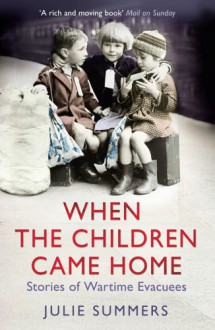
Funnily enough, I read this book last even though it was the first one that Summers wrote on the subject. Stranger in the House focuses on the men returning from the war and the effects that the war and separation from hearth and home had on themselves and the women in their lives. In the early 20th century, there was no real understanding of PTSD of which many POW (especially those who were imprisoned in the Far East and worked on the Burma Thailand Railway) suffered. On average, they were only expected to live a further 15 years because of the severity of their wounds and the maltreatment that went on for such an extended period of time. Those that lived beyond this were not considered 'lucky'. Most of the men who returned from war never again connected with their families because they were so changed and nothing of their experiences was ever discussed. Because Summers used secondhand accounts from the wives, daughters, and granddaughters coupled with primary written sources this is a unique perspective on a much discussed topic. 8/10
What's Up Next: The Gods Themselves by Isaac Asimov
What I'm Currently Reading: Kindness and Wonder: Why Mister Rogers Matters Now More Than Ever by Gavin Edwards

 Log in with Facebook
Log in with Facebook 











